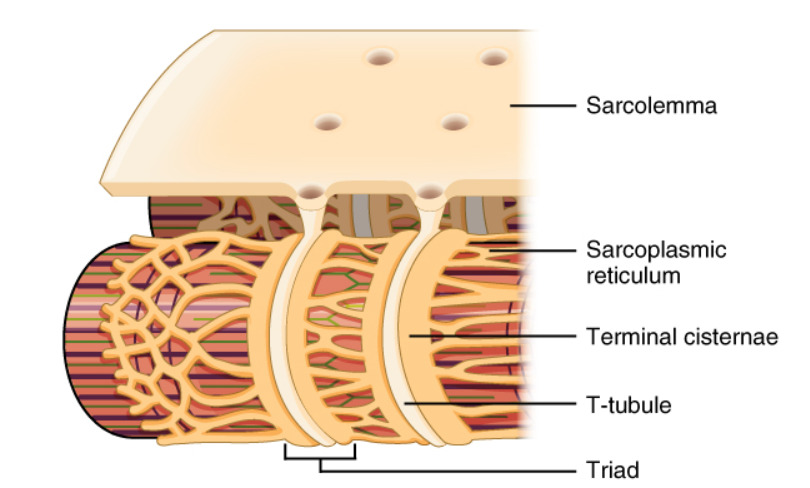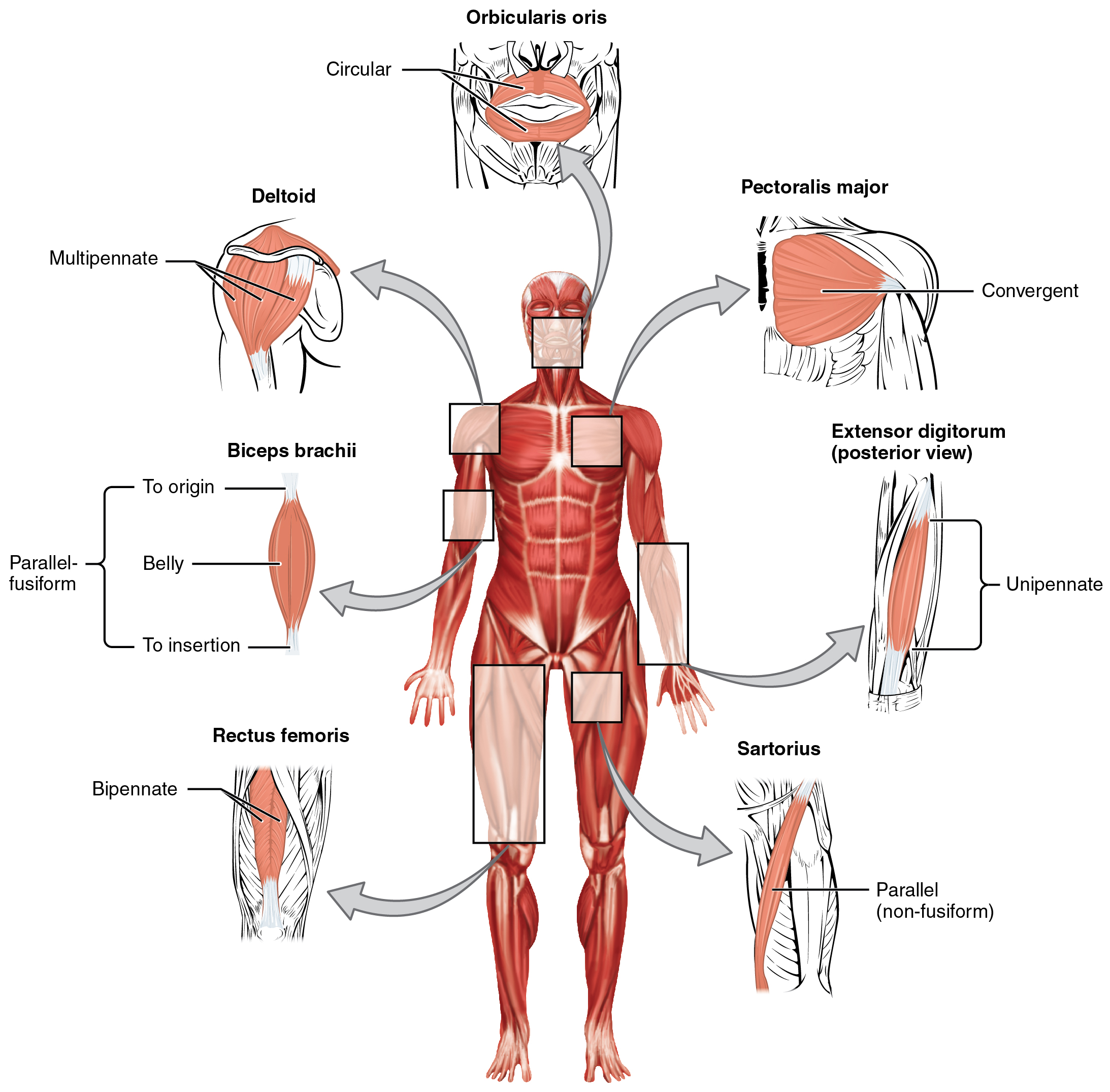Playlist
Show Playlist
Hide Playlist
Muscle Fiber Types and Properties
-
Slides Physiology Muscleoskeletal.pdf
-
Download Lecture Overview
00:01 Let's now discuss muscle fiber types because not all muscle behaves in the same way. 00:08 We have three main muscle fiber types. 00:12 We have two that are considered red muscle and one that's considered white muscle. 00:19 What makes the red muscle red is the myoglobin that is involved in that particular muscle fiber type. 00:27 Now when we break these into these artificial kind of slow oxidative, fast glycolytic, fast oxidative glycolytic, we are really more on a continuum than we are in individual bins, but it's helpful in our minds to be able to bin them so we can best approach a potential problem with the muscular system. 00:51 So let's now discuss a couple of different features of each of these skeletal muscle types. 00:57 So myosin ATP activity in slow oxidative fibers is slower than it is in fast glycolytic or fast oxidative glycolytic. 01:08 Another interesting component that's different between the fiber types is fatigue resistance. 01:16 Slow oxidative fibers don't fatigue as quickly as fast glycolytic fibers do, and then, fast oxidative glycolytic fibers fatigue less than fast glycolytic, so it sets up this system where you have slow oxidative glycolytic to fast oxidative glycolytic to then fast glycolytic in terms of their fatigue resistance. 01:43 In terms of oxidative capacity, this is the ability to utilize oxygen to make ATP. 01:52 This is going through the glycolysis followed by the pyruvate dehydrogenase complex followed by the TCA cycle or the crib cycle and then oxidative phosporolization. 02:05 Slow oxidative fibers have a high capacity to utilize oxygen followed by fast oxidative glycolytic and then finally fast glycolytic. 02:18 The opposite is true for glycolytic capacity. 02:22 Fast glycolytic fibers do not need oxygen to perform high amounts of activity. 02:29 In fact, they'd rather go through glycolysis and then over through the lactate dehydrogenase reaction to form lactate, to get energy quicker. 02:39 In terms of myoglobin content, it's very high in slow oxidative fibers, in fact, that's probably what makes it red in appearance. 02:49 In terms of myocardial size and number, these mitochondrial components are the kind of power house of an individual cell. 03:00 It's where the oxygen is going to be utilized as the final electron acceptor in oxidative phosphorylation. 03:08 As you can imagine in slow oxidative fibers, that volume is high in those fibers and lowest in the fast glycolytic, with the fast oxidative glycolytic being more moderate in nature. 03:23 In terms of capillaries that are surrounding the muscle, the density is very high with slow oxidative fibers, low with fast glycolytic and with fast oxidative glycolytic they're in the middle. 03:36 By knowing these inherent properties of muscle fiber types, you'll be able to better think about how a particular muscle will respond. 03:47 Some muscles have a predominance of slow oxidative fibers, others have a predominance of fast glycolytic fibers, but by knowing that, you'll know what their oxidative capacity is, their glycolytic capacity, their ability to resist fatigue, all based upon the muscle fiber types. 04:08 How do you determine someone's muscle fiber type? You take a muscle biopsy and then you would stain for some of these individual properties. 04:17 There are some individuals that have very high fast glycolytic fibers in certain muscle groups and that's one of the reasons that makes them fast, and other individuals that have higher slow oxidative fibers and that's what makes them a good endurance athlete. 04:34 Having this repertoire of knowing where these muscle fiber types are and which do what, helps you to understand the physiological function. 04:44 To help reinforce the muscle fiber types, I'm gonna use some track and field examples to help emphasize which particular fiber types are gonna predominate in which type of activities. 04:58 So things that utilize primarily the fast glycolytic fibers, those are field events such as the shot put, the long jump, or tract event such as the 100-meter dash, all requiring a lot of force, a lot of as fast as possible but can fatigue quite easily. 05:18 The fast oxidative glycolytic fibers need to also be fast, you need to produce a lot of energy quickly but you need to have that sustained over a longer period of time. 05:34 The 800-meters is a great example of this where the runners need to be very fast but they need to be fatigue-resistant as well. 05:44 Finally, our slow oxidative fibers, these are ones that are going to be fatigue-resistance or not gonna generate as much force, they're therefore the long hauls or good examples of these is the marathon in which you are going to be running for a long period of time, those number of hours of the marathon are utilize slow oxidative fibers. 06:09 If you were using fast glycolytic fibers you would fatigue and not be able to finish the race.
About the Lecture
The lecture Muscle Fiber Types and Properties by Thad Wilson, PhD is from the course Musculoskeletal Physiology.
Included Quiz Questions
Which type of skeletal muscle fiber would likely be highest in a marathon runner?
- Slow oxidative
- Slow glycolytic
- Fast oxidative
- Fast glycolytic
- Type IIb
Which type of skeletal muscle fiber would likely be highest in an athlete that excels at both endurance training and strength training?
- Fast oxidative glycolytic
- Slow glycolytic
- Slow oxidative
- Fast glycolytic
- Type IIb
Which of the following characteristic of muscle will be high in sprinters?
- Glycolytic capacity
- Myoglobin content
- Mitochondrial volume
- Oxidative capacity
- Capillary density
Customer reviews
5,0 of 5 stars
| 5 Stars |
|
1 |
| 4 Stars |
|
0 |
| 3 Stars |
|
0 |
| 2 Stars |
|
0 |
| 1 Star |
|
0 |
I like a lot the examples of each type of muscle fiber





